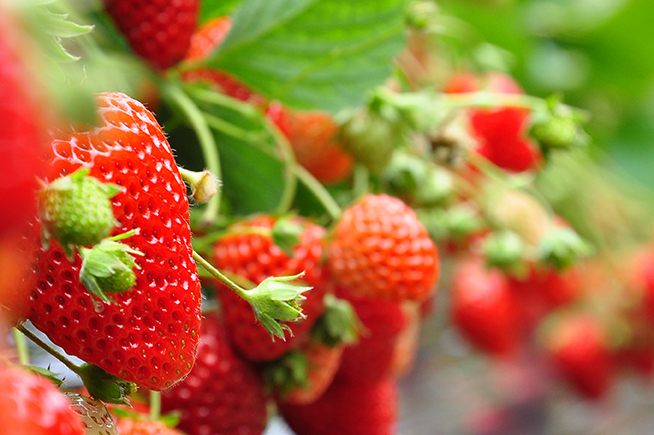Tips For Late Season Grapevine Irrigation And Fertilization
As we move through the late summer and into the fall, our grapevines are maturing their crop, and we, as growers, start to relax. But this is not a time when growers should become complacent. During the late summer and through the fall, we should be paying close attention to soil moisture levels. After harvest, we need to focus on fall fertilization and developing our vine management strategy for next season.
Irrigations
Whatever actions have been taken to enhance the quality of the fruit, they were mostly completed prior to veraison (berry softening). During this fruit-maturing period, soil moistures should be kept at moderate levels (about 70% plant available moisture) to allow the berries to develop soluble solids (sugar) and flavor characteristics. Excessively dry soils and the resulting vine stress will slow down the berry maturing process. This is particularly important in arid areas (most of California) and can be important when summer rainfall is low in the Midwest and on the East Coast. On the other hand, high soil moisture levels during the fruit ripening period can delay sugar accumulations and re-start vine vegetative growth.
There is a perception among some growers and winemakers that the only way to achieve “quality” grapes is by stressing the vines (and fruit) during the late summer and early fall. However, creating severe vine stress during this time period will not increase sugar levels or enhance fruit quality characteristics in a way that is healthy for the vines. With late season stress, most sugar increases and fruit quality enhancements are achieved through dehydration of the fruit. Obviously, if a vine is so severely stressed that the fruit is dehydrating, the vine is not developing additional sugars and fruit flavors, it is just condensing what was previously acquired. Late season (pre-harvest) vine stress also decreases crop yields, which is an important consideration for most growers.
After harvest, grapes are developing and expanding their root systems. To allow this process to occur and maintain a healthy vine, the soils must be maintained in relatively moist conditions. Maintaining an adequate postharvest soil moisture level is very important in arid regions (i.e. California), or if fall rainfall amounts are low in the Midwest and on the East Coast.
Fall Fertilization
As we pass veraison, we should definitely stop all fertilizer applications. If you didn’t apply your fertilizers for this year’s crop before veraison, it’s too late now. There are three nutrients that growers should typically consider applying in the fall — nitrogen, potassium, and boron. Which of these nutrients is needed, and how much of each, should have been decided through observing the vines, combined with bloom time and veraison petiole analysis.
•Nitrogen (N) — Much of the nitrogen used by grapevines for growth in the early spring (bud break to bloom) is derived from nitrogen taken up by the vines during the prior fall. The balance of the N is acquired during the six to eight week “grand” period of growth starting a few weeks before bloom. Between 20% and 50% of the nitrogen applied for the season should be applied in the fall (i.e. late September to mid October) with the balance in the spring during the “grand” growth period. This works well for most varieties and locations except for very late harvest situations where there is not enough time left in the fall after harvest. For these situations, all of the N should be applied in the spring.
•Potassium (K) — If you are “on the fence” about a vineyard’s need for potassium (potash), a veraison or post veraison petiole sample analysis can be of great value. As the fruit is maturing (from veraison to harvest), the vine is moving stored K (in the trunk, arms, etc.) to the fruit for the maturing process. During this high demand period for K within a grapevine, it is a great time to confirm through petiole analysis that you have or don’t have an adequate supply of K.
During the 30 days after harvest, grapevines are acquiring and storing K for next season’s vine growth and crop development. If a vineyard has a need for potassium, then the fall is a good time to apply this fertilizer. Since potassium fertilizers do not move in the soil very much (i.e. they do not readily leach), the soil can be used for storage of K for vine uptake in the fall and again when K is taken up by the vines next spring between bloom and veraison. The period between bloom and veraison is another opportune time to apply K if you are able to inject it through a drip irrigation system.
•Boron (B) — If a vineyard has an identified need for boron, the fall or winter are ideal times to make applications. With a drip irrigation system, postharvest injections of boron are very effective. With non-irrigated or flood irrigated vineyards, the boron can be mixed with a winter herbicide spray and applied under the vine berms. Remember that boron is a “micronutrient” and only small amounts are needed.









